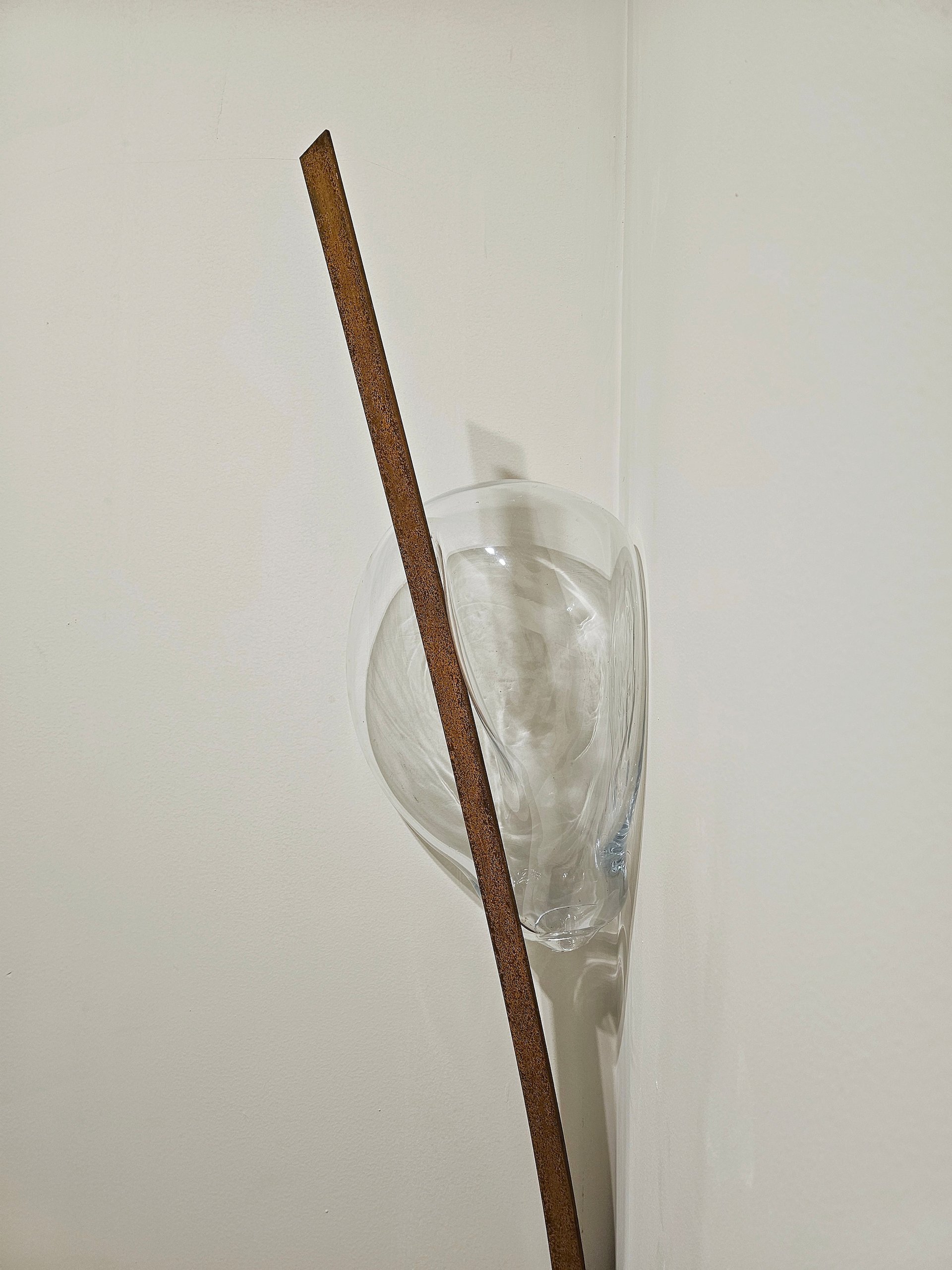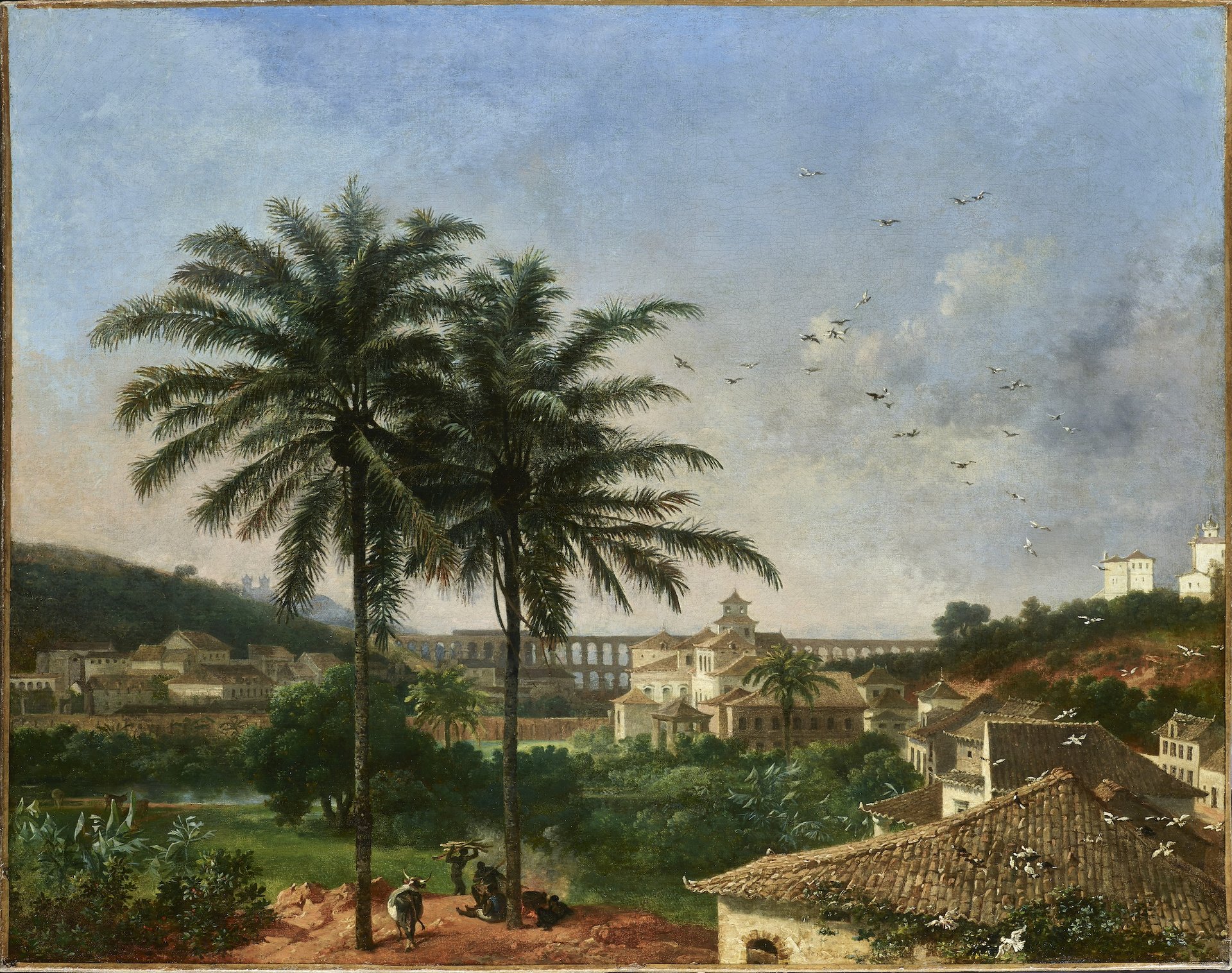Though 2025’s first quarter is already gone, the opening of Latin America’s biggest art fair, SP-Arte (until 6 April), this week in São Paulo effectively kicked off Brazil’s art calendar for the year. For its 21st outing, the fair features around 200 exhibitors at the Bienal Pavilion in Ibirapuera Park, with a strong showing by Brazilian galleries and a significant contingent of design dealers.
“It sets the mood in the Brazilian art sector for the rest of the semester, and maybe even the rest of the year,” Fernanda Feitosa, the fair’s founder and executive director, tells The Art Newspaper, adding that feedback from Wednesday’s VIP preview was promising. “When you see gallery owners smiling, you know that their stand is doing well.”
During the fair’s opening hours, there seemed to be plenty of dealers with reasons to smile. “We haven’t stopped a minute,” says Juliana Asmir, sales director at the Brazilian gallery A Gentil Carioca.
In recent years, Feitosa says, global art market momentum has shifted from Latin America to Asia. But, from what she has seen so far this year, international collectors and museum representatives are taking a renewed interest in Brazilian art.
“The interest in the fair is returning,” she says. “Eighty foreigners contacted us and that is almost triple the number of foreign collectors and curators we had in the past few editions.”
Visitors at São Paulo’s Bienal Pavilion during the VIP preview of SP-Arte on 2 April Courtesy SP-Arte
The Colombian curator Jose Roca, the current curator at large of Latin American and Latin Diasporic art at the Smithsonian’s Hirshhorn Museum and Sculpture Garden and the co-curator of the upcoming Bogotá Biennial, is one of those foreigners returning to SP-Arte after a prolonged absence.
“I hadn’t been to the fair since before the pandemic and I must say that Brazil has overcome the slump that all art fairs faced as a result of Covid,” Roco says. “You can see in the quality of the works the galleries chose to bring to the fair. It seems very, very vibrant.”
The Los Angeles-based collectors Vicki and Seth Kogan have been acquiring art for more than a decade—their holdings include works by Jeffrey Gibson, Yoshitomo Nara, Otis Kwame Quaicoe and Nick Cave—but this is the first edition of SP-Arte they have attended.
“This has been fascinating. It doesn’t feel rushed, like some Art Basel fairs. It feels very relaxed,” Vicki Kogan tells The Art Newspaper. Seth adds: “At some of the fairs it is not about serious collectors but more about celebrities and being seen. At SP-Arte it really seems that people are here because they love the art itself.”
The Kogans say they were pleasantly surprised with the diversity of Brazilian art and purchased a piece by the Porto Alegre-based artist Tulio Pinto from the stand of Piero Atchugarry Gallery. His sculptures test gravity by exploring the balance of weight and matter.

A work by Tulio Pinto on view at Piero Atchugarry Gallery’s stand at SP-Arte Courtesy Piero Atchugarry Gallery
“We usually go to a fair with the intention of seeing a particular artist or seeing a particular piece or gallery,” Viciki adds. “This is all unknown to us; all new and I love it.”
The Berlin-based dealer and collector Alfred Kornfeld—whose business, Galerie Kornfeld, is not showing at the fair—was also impressed with the quality of works on the fair’s stands by artists he had never seen before.
“At other art fairs we find artists from all over the world, but here there is a concentration of Latin American and Brazilian artists here,” Kornfeld says. “We [Europeans] knew of European and American artists but nothing about Brazilian artists. This is a nice change. We can learn so much from them because they have such a rich culture, but we were too snobbish to look at them. Now is the time to look at these artists.”
Some of this revival of international interest and attention, according to Feitosa, is due to the artistic director of the Museu de Arte de São Paulo (Masp) curating the central exhibition of last year’s Venice Biennale.
“The Biennale, curated by Adriano Pedrosa, revealed to the world the quality of art produced in the Global South,” she says. “The market is very concentrated in the Global North and, in general, people think that art from the global South is exotic, naive and cheap; there is even a certain condescension towards it.”
The fair’s opening follows the reopening of Masp following a six-year, $43m renovation and expansion project that was inaugurated last week.

Nicolas Antoine Taunay’s Aqueduct at Rio de Janeiro (around 1816-17) is on show at Galeria Danielian’s stand at SP-Arte Courtesy Galeria Danielian
Although much of the focus at SP-Arte this year is on contemporary artists from Latin America, one of the highlights of the fair is a painting by the French artist Nicolas Antoine Taunay (1755-1830) on show at Galeria Danielian’s stand. The work, Aqueduct at Rio de Janeiro (around 1816-17), is part of the earliest set of urban landscape paintings depicting Rio de Janeiro and has not been publicly exhibited since the early 19th-century. Representatives for Galeria Danielian declined to share the price of Aqueduct at Rio de Janeiro. When it was offered at Christie’s Latin American Art auction in New York last October, with an estimate of $200,000 to $300,000, it failed to sell.
For the international collectors and curators in attendance this year, the trip to SP-Arte has given them a deeper appreciation of Brazilian and Latin American art. Roca says: “If you want to see what is happening in this part of the world, you have to come to SP-Arte or other smaller fairs around the region.”
- SP-Arte, until 6 April, Sao Paulo, Brazil




